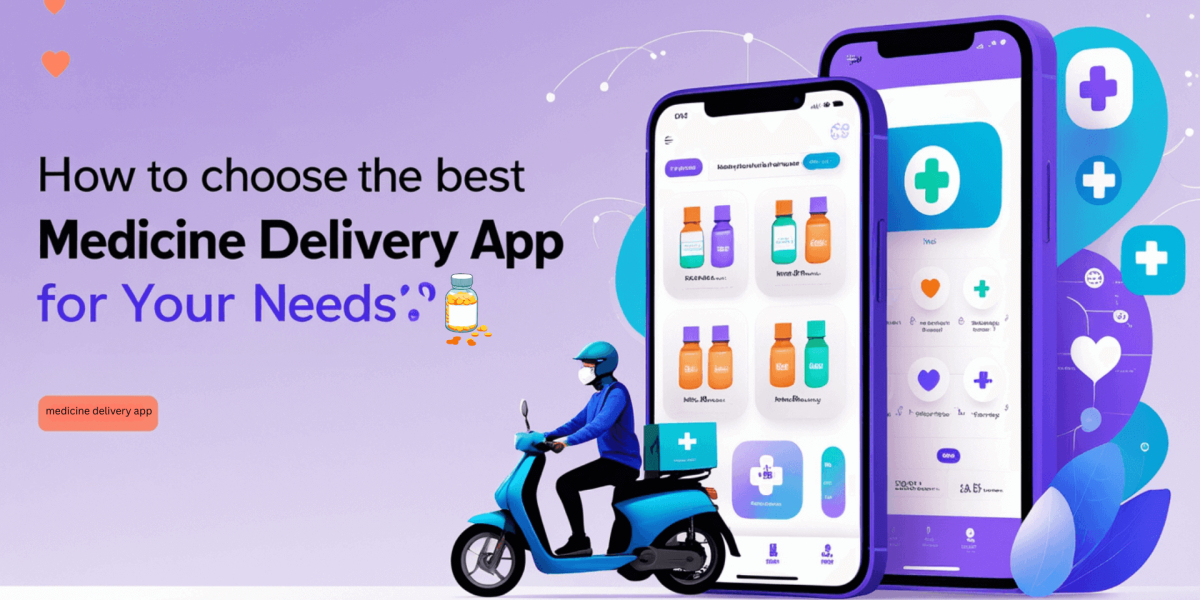From Wireframe to Launch-Ready: Web Design Process Simplified
- By Alena James
- 28-04-2025
- Web Development

Developing a website seems like much of a technical work requiring expertise and experience. Those who are new to the process often consider it a struggle unless they experience it personally. However, instead of being a nightmare, it is an exciting and interesting journey.
No matter if you are looking to launch your first ever website, designing your business platform or blog, or planning to revamp your portfolio insert— this article is a must read. Make sure learn about the journey from wireframe to launch ready as it can help you save plenty of time and come up with accurate results.
This blog is like a beginner friendly guide to help readers learn about the entire website design process broken down into 10 different phases. You can also consider it as a website road map that is simple, detailed, and user friendly.
Understanding the Web Design Process
Initiating with the basics is the finest way to help readers understand a process. The process of web designing is like a structured road map through which your website goes from out of an idea to a seamlessly performing and ready-for-the-market digital platform. It is made by combining different steps like planning, designing, content writing, coding, testing, and maintenance.
Readers must understand one thing — the simpler and smoother this process becomes, the more professional and flawless your resulting website will be. Readers must not ignore the fact that web designing is way ahead of just making an online platform look attractive.
The primary goal is to develop a venture that can solve problems, improve user experience, and help a business to scale and expand all over the target industry.
Phase 1: Discovery & Planning
Before jumping into the world of coding and visuals, having clarity about the project is necessary. The first phase of discovery is everything about learning the purpose behind the website. It is the phase where you can easily stop, ask yourself different questions, and create a structured road map for all the phases that are about to come.
At this point, professionals can identify the primary goals of their project, analyze their target audiences, research the major competitors, and list down the key functionalities that will make up the website. If you understand the phenomenon that you are not just building a website but trying to solve a problem, things will become easier.
Your website plan must include a list of pages that will be on your website like the home page, about us, contact us, and the services offered. Also, website owners must decide on the platform or CMS devil use like WordPress or Shopify. If this phase goes well, there are lower chances of getting stuck in the next phases.
Phase 2: Wireframing & Information Architecture
Once you have finalized your plan, it's time to move toward the visuals. Experts describe the wireframe as a skeleton for a website. It must not look beautiful but stand strong. Consider it as the basic layout through which you will understand where everything will go on your website. No multicolored drawings or fancy graphics — just a set of text placeholders, simple boxes, and architecture.
A wireframe helps the web designer to understand how audiences will navigate through the website. It lets you understand the arrangement of web content. For this reason, a wireframe is the spot where you can easily describe your information structure.
For instance, if you are building a retail store, the wireframe will dictate the position of your call-to-action buttons, product details, and category filters. This way, developers and designers can easily prioritize user experience before developing the code and placing any pixels, respectively.
Remember that this face is also important as it can help to prevent the cost of redesigning in the future. This is because the wireframe can be easily adjusted rather than reworked on a completely coded page.
Phase 3: Visual Design
Once you have finalized the wireframe, pay attention to the addition of colors, typography, pictures, and branding. These are like the living elements of a website. In this phase, the web layout is transformed into an actual digital platform. Try your best to be creative when designing the visuals.
This is because a flawless design consists of more than the visuals. As the foundation of a website, it includes the functionality and user experience. Also, it is the responsibility of a good designer to apply a layout that runs smoothly across multiple devices.
Look for a readable and visible font along with unique call-to-action buttons. Once you have implemented a responsive design, moving to the next phase is easy.
Phase 4: Content Creation
The design and content of our website are directly connected to each other. Your stunning website is often used without SEO optimized content plan. This phase focused on the creation of clear and engaging content with a goal-oriented strategy.
Our content creators will optimize the entire website with compelling headlines, CTAs, and informative sections. For better search engine ranking, include blog content, videos, customer reviews, and infographics. This phase is all about building trust and enhancing the personality of your venture.
Phase 5: Front-End Development
After finalizing the visuals and content of the website, you can move towards front-end development. This phase includes coding all the front-end features like menus, animations, forms, sliders, and more. You will need a professional-grade developer for phase two to transform all your design work into actual code.
Experts—including those at a web design company in Los Angeles —recommend using trustable technologies like CSS, JavaScript, HTML, and more. It is the responsibility of front-end developers to make sure the website appears similar across multiple screen sizes and browsers. Besides confirming that the visual design is according to the wireframe, developers also check for the response of web pages, buttons, animations, etc.
Do not forget that precision is an utter requirement of this phase. You must eliminate the smallest errors, as they can negatively impact the website's layout and performance. Developers are advised to optimize the website in terms of mobile performance, loading speed, and accessibility.
Phase 6: Back-End Development
Just like the front end, the back end of the website is equally important. It is the part that keeps everything and makes sure that the website is running smoothly. Back-end development Controls everything from payment gateways and data storage to user logins and contact forms.
This phase depends on the type of project you are working on. Back-end developers can use tools according to your project like Python, PHP, MongoDB, MySQL, and more. Developers who are using content management systems will also work on customized modules and plugins in this phase.
The most important features to work on are our performance, scalability, and security of the website. A perfectly developed back end helps your website to perform seamlessly while protecting user data and handling organic traffic.
Phase 7: Testing and Quality Assurance
Once you have completed the development, the next step is testing and quality assurance. This phase decides whether the developer has created the website accurately or not. You have to check whether your platform performs seamlessly across multiple devices and browsers.
Make sure to test for any bugs or broken links that may hinder website performance. There are five primary types of testing necessary for this phase.
- Functional Testing: Checks whether all the forms, links, and buttons are functioning properly.
- Responsive Testing: Tests the performance of your website on multiple devices like tablets, desktops, and smartphones.
- Cross-Browser Testing: Confirms the compatibility of your website across different browsers like Safari, Chrome, Edge, and Firefox.
- Performance Testing: Checks the performance of your website in terms of speed and page loading times.
- Accessibility Testing: Confirms whether your website is accessible for individuals with disabilities by using tools like the screen reader.
The primary purpose behind testing is to make sure of any bugs that are left unchecked. It helps to rectify and resolve all issues before launch.
Phase 8: Pre-Launch Checklist
Before moving towards the phase of launching and deployment, creating a prelaunch checklist is necessary. Below are the things that you must confirm before hitting the launch button.
- Check whether the meta titles and descriptions of the website are SEO optimized with accurate keywords.
- Make sure your website includes Google Analytics and tracking to analyze user behavior and regular traffic.
- Confirm whether developers have included a site map on your website along with a Robots.txt file as it helps in the proper indexing of your platform.
- Confirm whether your website is SSL certified and consists of HTTPS in its URL to protect your website.
- Check for all the backup and storage systems so you never lose your data in the future.
- Check whether there are any 404 error pages to rectify any links or if users are landing on the wrong pages.
A prelaunch checklist may seem unimportant but it is a critical part of web development and designing. It gives you the confidence to launch your website and enter the market.
Phase 9: Launch
Now comes the most important phase — launch! Once you have passed all the tests and you confirmed your checklist, it is time to enter the market finally. Launching of website means transforming your code and content to a live server. You point your platform towards a domain and make it accessible to the public.
This phase is not just about making your website live but promoting it on multiple social media platforms. You can also advertise your website through emails, newsletters, blogs, and press releases. Experts also recommend monitoring the analytics closely during the first few days of the website launch. It helps to keep bugs from slipping through and impacting your growth.
Phase 10: Post-Launch & Maintenance
The last phase of web designing is the one post-launch. Once your website goes live, the real work starts. Now your platform will require regular attention to stay effective, secure, and smooth. Website owners must work for the long-term performance of their platforms.
Start by hiring a content team that can add new blogs, update your services, and include different portfolios. You will also require software updates through which you can keep your themes and plugins updated and market-ready. Most of your competitors will be using tools like Google Search Console or GT metrics to keep monitoring their platforms.
Also, hire a quality assurance team that can run malware scans and monitor your website for any suspicious activities. These professionals will also be responsible for backing up your data and checking for storage. Another issue that must be checked regularly consists of broken links.
Always keep checking for such errors as they can negatively impact your SEO strategies and lead to bounce rates. This phase is also helpful for collecting user reviews and feedback to know where you stand in the market.
Common Mistakes to Avoid in Web Design Projects
Remember that, even after going through a detailed web design process Form any Web Design Agency can do, from wireframe to launch ready, things can go astray unexpectedly. Websites can often go off track due to some common mistakes. We have listed a few missteps that often lead to an unpleasant user experience and downfall.
-
Do Not Escape the Discovery Phase.
Often beginners jump to designing without performing detailed research. It can result in the development of an unfocused and effective website.
-
Do Not Ignore Mobile Users
Even with half of the population being mobile users, people develop websites only for desktops. This is totally wrong as having a website that is not mobile-friendly can cut down a huge chunk of audiences.
-
Do Not Add Unnecessary Features
In the urge to make your website attractive and exciting, often people add too many animations and popups. Unfortunately, these can lead to complex navigation and frustrate users.
-
Do Not Neglect Website Speed
Learn the fact that any website loading for more than three seconds can increase bounce rates. Make sure to not ignore speed optimization as it is necessary to keep your users happy and returning.
-
Do Not Forget the Disabled Ones
Your website must be accessible for everyone individuals who browse differently. Accessible websites are always considered by search engines and help in better ranking.
By focusing on these mistakes and avoiding them, you can secure your brand image and ensure a strong online presence.
Future Trends in Web Design
The digital market is evolving every day. Website owners must keep up with future trends to stay competitive across the market. By looking at the modernizing technologies, website owners will be experiencing AI-powered personalization in the future. This will make it easier for websites to adjust according to user behavior.
It is no doubt that voice search optimization is taking over the market. Hence, you must implement voice search on your website and pay attention to voice SEO. Most smartphone users are attracted to dark themes and multi-colored modes. Besides being pretty and visually appealing, this feature boosts usability too.
Also, try to implement the 3D motion design feature while using headless CMS platforms. It helps to energize the user interface and provide users with a highly flexible experience. By staying ahead of these trends, you can remain confident about your growth in the market.
Final Thoughts
In the end, understand that the web design process is not everything technical. It is a detailed journey that involves strategy, creativity, problem-solving, technology, storytelling, and design. From the first phase of research and discovery to the final phase post-launch, every part has its equal importance.
We suggest beginners do not rush any phase. Take your time and pay attention to every step as the end results will be pleasing and scalable. Do not wait and transform your website into a digital home that can truly represent your venture and place your position in the market.


.jpg)


